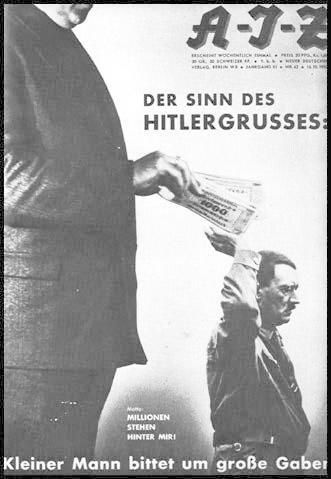Mixed Media Research
- Dave Macey

- Jan 15, 2016
- 3 min read

In his book, understanding a photograph, John Berger dedicates a chapter to photomontage and discusses the work of John Heartfield. In the chapter Berger asserts that Heartfield and Raoul Hausmann were the creators of the photomontage and was the first people to use this technique for political gain and coercion.
Heartfield originally came from Germany and was a committed communist before the rise of Hitler. With this being the case Berger asserts that the political photomontage has the impression of always being left wing and the voice of protest. I think this is a valid point because the photomontage does have the impression of being part of a protest movement and is used to challenge the state or the people in authority.

Berger also mentions about political montage concentrating on the moral stance of politicians. One montage that he mentions is of Hitler being overshadowed by an industrialist giving him money, which insinuates that Hitler is being controlled by them . In another montage Hitler is seen as a puppet and having his strings pulled by a man wearing a suit and smoking a cigar (presumably an industrialist). Both of these montages are powerful and exert the message that Hitler was being controlled by the industrialists, which could be seen as the bourgeoisie from a marxist perspective. With this being the case it calls into question the morality of Hitler and that he is being bribed by industrialists, that his ulterior motive is one of personal gain. This also plays on the perception that politicians are mainly interested in advancing their own wealth and careers at the expense of the normal people.
Further on in the chapter Berger talks about the disgust and sordidness of the message that the photomontage carries. This plays on the morality of the politicians and how they are just interested in furthering their own wealth and power, which nowadays is a common accusation of politicians. By employing the use of this element of disgust, it then fosters an impression of cynicism and this in turn feeds the impression of disgust. It becomes parasitic on itself, the disgust leads to cynicism, which fuels the disgust that leads to the cynicism and consequently leads into a never ending circle of disgust and cynicism.

Another point that needs to be raised is of how a photomontage uses the rhetoric of the image. By using elements that are contrasting with each other, there is a process of antithesis. This is where contrasting objects form the image in either the denotation or connotation when the image is being read and it is this contrast that leads to a definition. In the case of the photomontage of Hitler being overshadowed by a shady figure giving him money, the antithesis is a moral one, which has come through the connotation.
So, with this being the case, how can I apply this to my own photomontage project? First of all, photomontage is not subtle, it is forceful and attention grabbing and tries to achieve a reaction. I then need to concentrate on the morality of the politicians and depict them in a more negative way, and as I’ve chosen the conservative manifesto, I can concentrate on the message being about power, money and control being their motivation rather than equality, social justice and compassion.



Comments